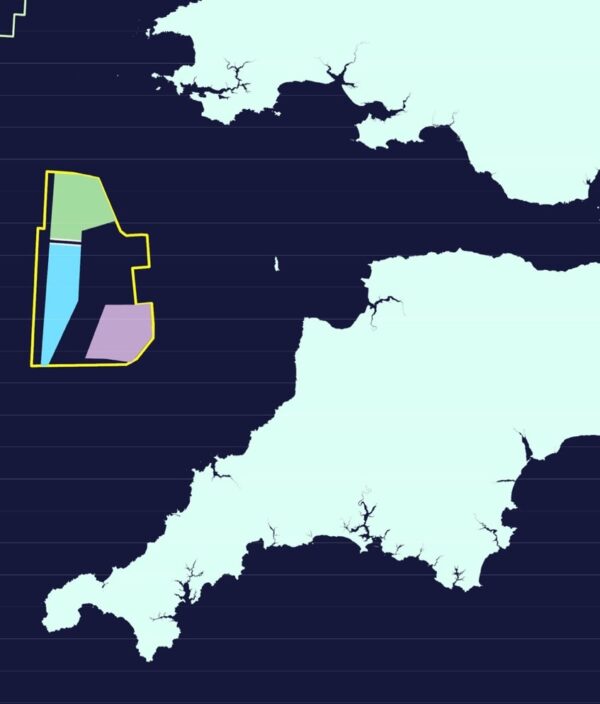The Crown Estate has set out further details on its plans for Offshore Wind Leasing Round 5, which aims to establish new floating offshore wind technology off the coast of Wales and South West England.
This latest update follows a period of engagement with developers and wider stakeholders on proposals set out in July over how to make best use of available space in the Celtic Sea. As a result of the feedback received, The Crown Estate has confirmed that:
- Three Project Development Areas (PDAs) of roughly equal size are expected to be made available to bidders, as opposed to the previously proposed four PDAs of varying sizes
- No bidder will be able to secure an Agreement for Lease for more than one PDA
- As a result of bringing forward three equal-sized PDAs – each with a potential capacity of up to 1.5GW – the overall capacity available through Round 5 has increased from a possible 4GW to up to 4.5GW, enough to power more than 4 million homes
An Information Memorandum is expected to be published before the end of this year ahead of the formal start of the leasing round.
Developers will be required to set out specific commitments to ports, as well as establishing binding commitments on wider issues such as enhancing skills, addressing environmental impacts and delivering community benefits as part of the leasing process.
New aerial surveys get underway
Alongside information on the location and size of the new windfarms, The Crown Estate has also updated developers on its multi-million-pound programme of marine surveys. The latest phase of this work started on 24th September, with specially-equipped aeroplanes taking to the skies to gather data on the sea birds and marine mammals around the project sites and more widely in the Celtic Sea. This follows the award of a contract to leading aerial surveyors HiDef for a two-year programme.
Gus Jaspert, Managing Director Marine at The Crown Estate, said: “Round 5 is set to be one of the biggest projects of its kind in the world, and will be a game changer for the UK’s energy security and net zero ambitions. It also stands to be transformative for communities across South Wales and South West England. We will continue to work closely with governments, industry partners and our full range of stakeholders to drive the partnerships needed to truly realise the full potential of floating wind in the Celtic Sea.”
Further information can be found here.
